Academics
Curriculum Areas
Maravilla aims at offering all our students a broad and balanced curriculum using tried and true Montessori materials and philosophy. Explicit individualized instruction, balanced with ample time to explore, provides rewarding and stimulating growth for students to gain confidence and independence. Engaging presentations and materials in the environment ignite students’ passions to learn while the teachers guide them to new skills and deeper understandings.
Language
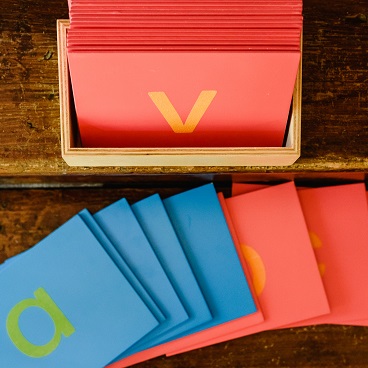
Montessori Language curriculum is rich with materials that support the natural development of the child. The teacher looks for readiness in the child and plans lessons based on observations made throughout the work cycle. The child is introduced to learning phonics that are sequenced in a way that help them independently decode and understand how to read. Sound blends are introduced systematically after the child masters individual sounds. The elementary language curriculum builds upon these reading foundations and prepares the child far beyond what traditional schools expect.
Elementary students transition from learning to read to reading to learn. Students are exposed to different genres including realistic fiction, historical fiction, mysteries, biographies, and various non-fiction. Students practice comprehension through guided reading groups and book clubs.
Students also experience lessons in expository, narrative, opinion, and persuasive writing styles throughout the elementary years. Skills are grown as they navigate the writing process and draft multiple revisions with peer and adult editing guidance.
Maravilla Montessori also recognizes that our students will at some point be asked to complete performance tasks and assessments aligned with Common Core standards. Accordingly, we will periodically do internal checks to be sure that all children are meeting and exceeding minimum standards.
A child who is captivated by language is able to continuously feed that need, as our classrooms use materials that expand vocabulary through the use of nomenclature cards across all subjects. Being intrinsically motivated by a classroom topic also provides natural application and synthesis of the reading and writing skills during research.
Mathematics
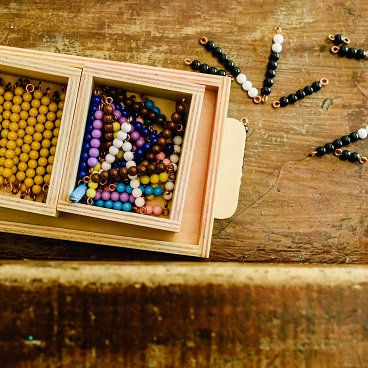
Math in the Montessori classroom begins at the primary level through Practical Life and Sensorial lessons. This promotes the growth of being able to place concrete materials in order, classify them, sequence them, and begin understanding relationships. When the child enters the Elementary classroom they see materials repeated from one space to the other, but now they are asked to use them in different ways. A beneficial use of these materials is also that they can be used by the entire class for different levels of difficulty. Each student then finds value in completing the work and avoids the distraction of being competitive. Instead, each child focuses on personal growth and works from intrinsic motivation.
Spanish
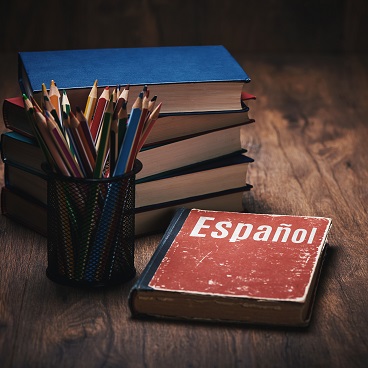
In order for every student to become a global citizen, we begin them on a journey of learning a second language. Giving the child the opportunity to expand the ways in which they communicate with their world will prepare them to confidently navigate new interactions. In addition to being able to communicate with others, the child also makes stronger connections to scientific language. Learning Spanish gives the child clues to the root words that make up more complicated words that they may not have heard before. In lessons across each subject, each teacher brings in the connections from Spanish lessons and ties them into the etymology of the nomenclature being taught in Zoology, Botany, Earth Science, and English. Our school uses a trusted Montessori Spanish curriculum that is effective in not only teaching vocabulary, but also allows the child to achieve conversational level Spanish. We begin every morning with a Spanish lesson and sprinkle in supplemental small group lessons throughout the week. Each child is assessed quarterly and placed in groups according to their ability.
Geography
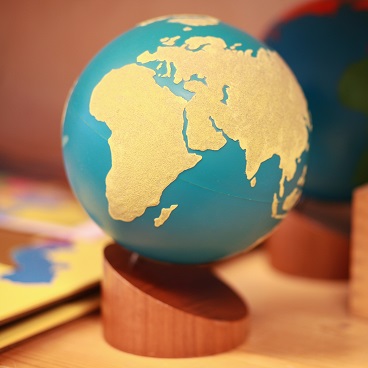
Political geography is studied in all classrooms through the use of puzzle maps and through pin maps in the elementary classrooms. Children attempt to learn the names of all continents, countries, and capitals by the end of their 6th year.
Physical geography, also known as Earth science, is studied extensively as the children learn the age of the Earth and how it was formed. We discuss with them weather, geology, and our place in the solar system. The nomenclature that goes with different water and landforms, including rivers, lakes, oceans, mountains, volcanoes, and biomes helps the child further expand their vocabulary.
Botany

Children love to explore the natural landscape of our midwestern prairie land at Maravilla Montessori. We use our beautiful grounds to give our students a hands-on experience when learning about botany. The Plant Kingdom is introduced early on and classification systems are reviewed multiple times a year as we progress through our science and ecology lessons. Scientific nomenclature cards help the child identify parts of the plant and its systems, as well as expand their vocabulary. All botany lessons allow for the child to use their fine arts education and research writing skills to show mastery of the material.
Zoology
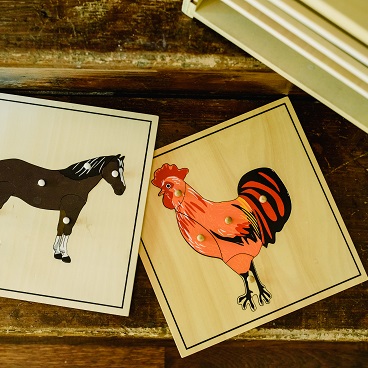
Animals are always a favorite subject of study for children. We begin the year by sharing with our students the great stories about how long it took for all of the animals to adapt to their environments and develop into the modern day creatures that we see today. Animal Kingdom classification systems are introduced and used throughout the year. Over the 3 year cycle, children become comfortable and skilled at classifying living organisms. Scientific nomenclature cards help the child identify all parts of each kind of animal and their systems, as well as expand their vocabulary. All zoology lessons allow for the child to use their fine arts education and research writing skills to show mastery of the material.
Culture

To gain a more thorough understanding of the world, and thus creating global citizens, our students are surrounded by cultural lessons that broaden their knowledge of societies across all walks of life. We have a culinary arts program starting at the elementary level that incorporates geography lessons to bring a focus into the foods and behaviors of different cultures. Each week a recipe from another country is selected and the students prepare the food for their classmates. (COVID precautions may affect this program occasionally.) Similarly, we do a world tour of instruments from each continent. We listen to the sounds of the instruments and then introduce different dances that may be associated with specific cultures. Folk tales and lore are also shared according to our continent studies. At times students may choose to create costumes and act out plays that are relevant to the folk tales being studied.
Music

Maravilla Montessori prides itself on providing students with as many culturally enriching experiences as possible. Music and art are part of our everyday learning. The Montessori bells and tone bars, Montessori specific instruments, are available at all times and become a peaceful sound in the hum of the work cycle. Children are encouraged to practice using the bells and tone bars to develop their musical ears. Using these materials and a knowledge of the Suzuki style of music instruction, we are able to teach the children music theory, scales, dynamics, and how to read music. Guest musicians and instructors will be brought in routinely to encourage musical growth and show real world application to the lessons that are being given.
Art

Higher level thinking is developed in the child through the use of creativity. Fine arts instruction is taught as part of the everyday curriculum. Our program uses real artist quality paints, tools, and canvases to make the experience as memorable as possible to the students. By offering a robust arts program, we are able to engage the child fully. We find that the child produces work more effectively, efficiently, and with happiness.
In a three year cycle, the child will learn to paint with watercolor, acrylic, and ink; sculpt using a variety of clays, wires, foil, plaster of paris, and paper mache; drawing skills using graphite, charcoal, oil and dry pastels, and ink. Fiber arts include making patterns, sewing, and using wool for needle felting and wet felting. Nature art is prevalent during outdoor exploration, as well. Art history and theory is tied into our geography work, as many different countries and cultures have an art style that is uniquely their own. Any fine arts skill that is mastered by the child is readily available to them to use in their follow-up work after lessons are presented.
